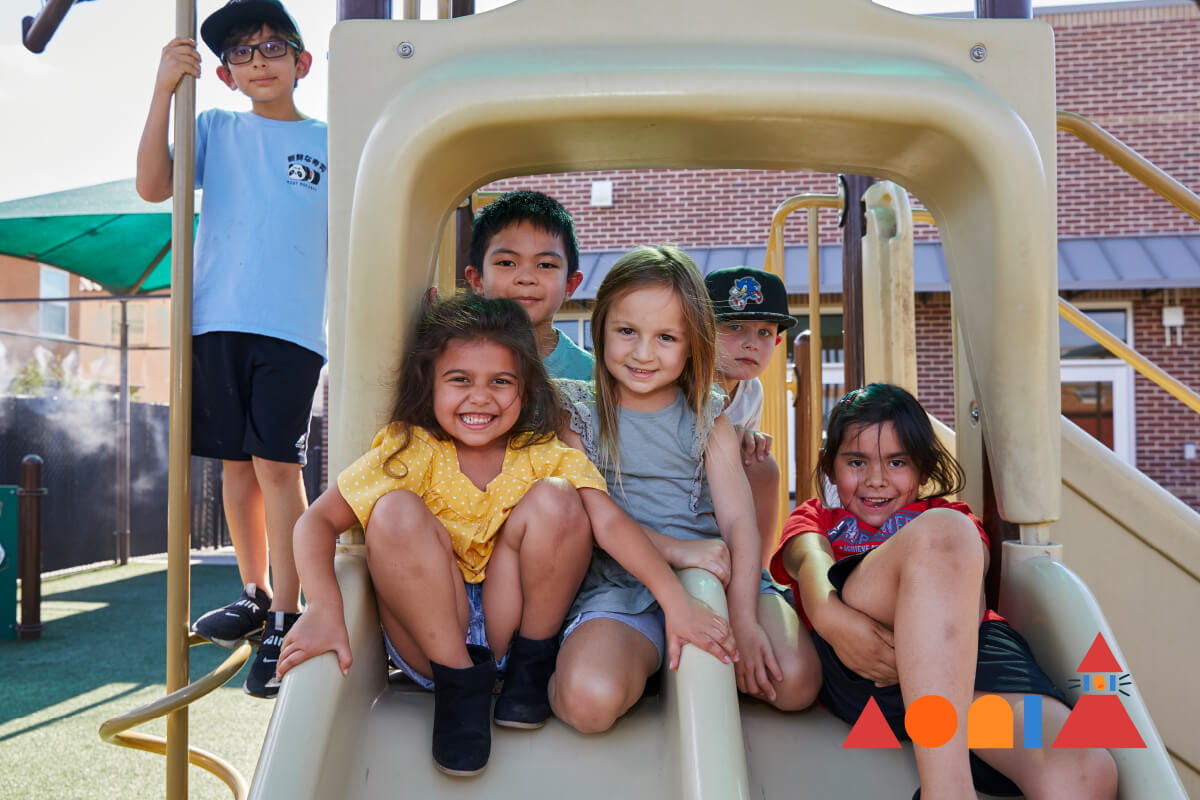Social-Emotional Learning: How We Teach Kids to Name Big Feelings

By Carolyn Sweeney Hauck
Walk into Pre-K teacher Claire Kessler’s classroom, and you’ll find children doing what three- and four-year-olds love to do: They’re coloring, building with blocks, laughing over silly pictures in a book, or quietly playing in the corner with friends. It’s a harmonious, happy, and all-around classic classroom scene.
But six months ago, the room was, well, a lot more chaotic. “This particular group of children had developed a dynamic that was challenging for all. There were some behavior issues that needed some attention,” Kessler explains.
Kessler, an expert educator who teaches at the Downtown Portland KinderCare in Portland, Oregon, had to make a change. She wanted to create a different kind of classroom culture for her kids, one based on kindness and respect.
And to do that, she had to start with social-emotional development basics: teaching children first to name their feelings, and then how to talk about them.
Teaching Children to Be Empathetic Is at the Heart of What We Do
Teaching social-emotional skills is central to KinderCare’s curriculum. Without the ability to name moods or talk about them, explains Inclusion Services Manager Taunya Banta, children can easily get overwhelmed and frustrated—and that’s when tantrums begin, arms are bitten, or toys are grabbed from friends’ hands.
As Banta points out, empathy needs to be explicitly taught to children, and they have to learn how to respond to others’ feelings: “We have to teach that to kids so that they know what do to the next time a friend is angry or sad.”
That’s why KinderCare teachers use a tool called “feelings magnets” to help children make critical links between language and how they are feeling. For children, the magnets are a simple but powerful social-emotional learning tool. They depict real photographs of children demonstrating facial expressions that correspond to a range of emotions: scared, proud, sad, happy, angry, shy, confused, and surprised.

In Kessler’s classroom, she supplements the feelings magnets with a toddler emotions chart (shown above) and laminated pictures of the kids themselves (which they clearly love), and uses them as tools to foster dialogue about emotions and positive behaviors.
To get started today, Kessler holds up a picture of wavy-haired Kylie.
Kessler: “What emotion is Kylie showing in this picture?”
Children: “She looks sad.”
Kessler: “And what do we do when people are sad?”
Children: “Give them hugs! Or ask them if they’re okay.”
Kessler: “That’s right. That’s how we help our friends feel better.”

Kessler keeps the conversation going and breaks out the Big Kahuna: anger. She makes an angry face, and then a growling sound. “What emotion am I?” “Angry!” the children yell.
“Angry is the hardest one for me,” she admits to the kids. “It’s hard to know what someone needs when they’re angry. Do you want people to talk to you when you’re angry?”
“No!” they reply. “Me neither,” Kessler agrees. “I don’t want to talk to people when I’m angry.”
The conversation about anger turns out to be very relevant for one of the children. Kylie recalls an earlier moment in the day when she had been really angry. When Kessler digs a little deeper into the subject, Kylie admits that what she needed was a hug. Kessler takes note for next time.
Teaching social-emotional skills to children has not only been powerful for them—it’s been powerful for their families, too.
Kids, Kessler compassionately explains to her families, are learning everything, including how to be empathetic human beings. “Adults can get frustrated with kids when they don’t show the appropriate response,” she says. “I think it’s really exciting when all of a sudden kids have words for something they’re feeling, and then they can tell adults and feel understood. That’s a really powerful moment for a child!”
In true Kessler fashion, she ends her conversation about emotions on an upbeat one: happy.
“Now I feel like this one, because I have friends who care about me. What can you do when someone is happy?” “Play with them,” responds bright-eyed London, “or give them a high-five.”
We give a high-five to that!




